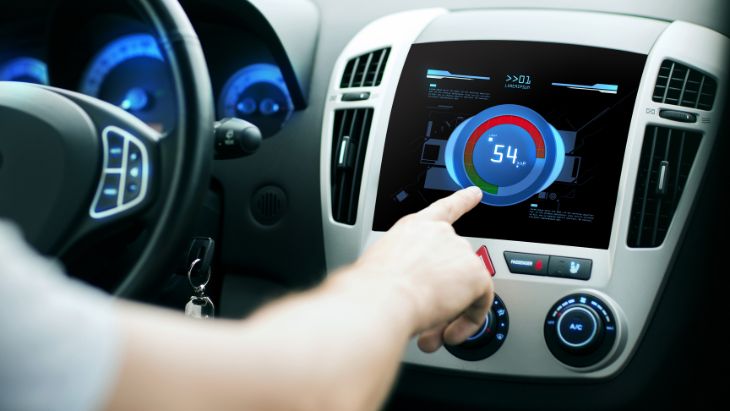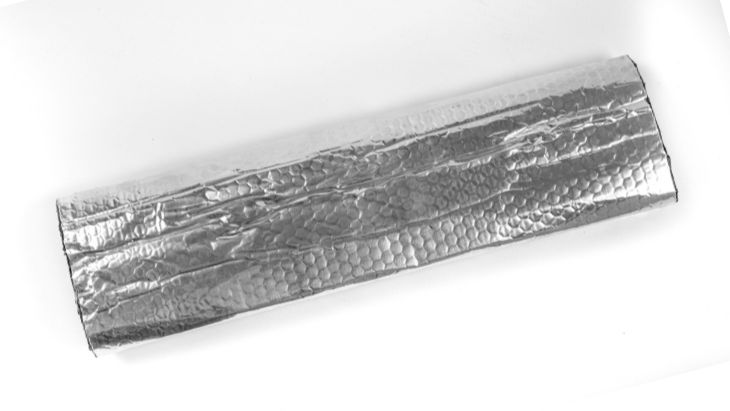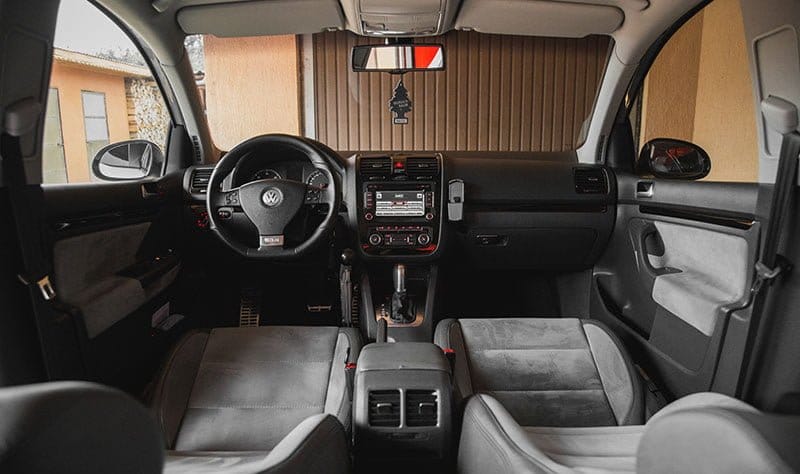There’s nothing as fun as listening to your favorite music or radio station while driving, especially on a road trip or long-distance drive. However, if the sound quality in your car is not pleasing, your listening experience won’t be the best. If you’re still using your factory car music system, you’ll definitely fail to get quality sound in your car. Also, if you’re using aftermarket car speakers and everything is not sounding great, then there’s more you need to do. If you’re wondering how you can improve the sound quality in your car and don’t know where to start, then you have landed on the right page. Well, there’re various things you can do to achieve the best sound in any car. Read on through this article for a detailed list of 10 actionable tips to improve your car’s sound quality.
1. Invest in new speakers
If you’re using factor car speakers in your car, then it’s time to upgrade them with new aftermarket speakers. Factory speakers are only built for basic sound. They sound flat and miss out on most sound details. You’ll hardly get any bass with factory speakers. Also, if you love highs, factory speakers are always unable to deliver crisp highs. If you want to improve the overall sound quality in your car, then you need to start with replacing the stock speakers with new, aftermarket speakers.
The good thing with aftermarket speakers is that you can choose from many models and designs. Aftermarket speakers are designed for powerful sound. You can choose between component speakers and coaxial speakers. With component speakers, you’ll install separate speaker drivers for bass, mid, and highs. Component speakers can deliver high-quality sound if installed the right way. With coaxial speakers, the speaker comes as a 2-way, 3-way, or even 4-way speaker system. This means that a coaxial speaker comes with multiple drivers built in one speaker basket. For instance, a 2-way car speaker will come with a tweeter and a woofer driver, thereby delivering highs and lows.
When investing in new speakers, go for high-quality speakers. Ensure the speakers you choose can deliver the kind of sound you need. For instance, if you love the full-range sound, then ensure the speakers you invest in can deliver such sound. Also, investing in high-quality car speakers will guarantee many years of listening to high-quality sound.
2. Get a new head unit

In case you’re still stuck with a factory head unit, then you won’t get the best sound. Most factory head units don’t output the much-needed power to drive aftermarket speakers. Also, a factory head unit may have minimal features for controlling sound. Thus, it’ll limit you from getting the best sound. Simply do away with the factory head unit and invest in an aftermarket head unit. An aftermarket head unit will deliver a more powerful sound. It’s also able to deliver more balanced audio signals.
A new head unit will also deliver clearer and crisp audio. This way, you’ll enjoy higher-quality audio in your car. You’ll also get more connectivity options with a new, aftermarket head unit. For instance, you’ll be able to connect devices wirelessly via Bluetooth such that you can connect your phone or other mobile devices to stream your favorite music wirelessly. You’ll also get more tuning options such that you can shape the audio output to your liking. Moreover, an aftermarket stereo delivers a preamp output that is ideal for amplifier input. Basically, factory head units produce a weak output that is not ideal for the best amp input. Luckily, a new head unit will deliver a clean, strong output that’s noiseless and ideal for amp input.
3. Consider adding a car amplifier
While you might be having a high-quality aftermarket head unit and speakers, you can further enhance the sound you’ll get in your car by adding a car amplifier. Adding a standalone car amp will add more power to your speakers beyond what the head unit can achieve. You’ll simply connect the head unit output to the amp input, and then connect the amp output to the car speakers. The amp will also deliver cleaner and clearer sound to the speakers than when using a head unit alone.
Also, you’ll need an amp to drive more powerful speakers, especially subwoofer drivers. Generally, subwoofers demand more power than regular speakers. Thus, powering them with an external amplifier will give you deeper and high-quality bass. Basically, an amp works by amplifying low voltage sound signals that come from a head unit and outputs high voltage sound signals to feed the speakers. If you really need powerful, high-quality sound in your car, then you surely have to add an amplifier.
4. Invest in an equalizer

While a head unit and amp may come with some sound control features, you’ll still be limited with the kind of controls you can apply to the sound. Investing in a standalone equalizer is the best bet for getting unlimited sound control features. Basically, the sound you get from a speaker is usually based on the default tone and gain settings from the head unit. While you may increase volume, you may not be able to shape the sound to your liking without having an equalizer.
An equalizer works by cutting out and cleaning up any offending bandwidth while boosting masked frequencies. For instance, the resonant frequency in cars may interfere with the frequencies produced by car speakers. An equalizer can clean the frequencies that make sound muddy and boost any frequencies that get masked by resonance. Also, an equalizer boosts the frequencies that are masked by road noise.
When used appropriately, an equalizer is also able to shape the sound depending on a car’s acoustic properties. For instance, glass in a car tends to reflect certain frequencies. and Glass exaggerates high frequencies. Car surfaces that absorb sounds such as carpeted floors and dashes can dull crisp sounds. Luckily, an equalizer can boost the frequencies that are being absorbed and attenuate the frequencies that are being exaggerated.
5. Consider adding a subwoofer and a sub box
Although aftermarket speakers may sound great and offer some bass, they can’t deliver the kind of bass that can win a car music competition. If you need deeper and more enhanced bass, then consider adding a car subwoofer. A car sub is specially designed to reproduce low frequencies. If bass matters a lot to you, then enhance it by adding a sub.
While a sub is great, it won’t sound the best without a subwoofer cabinet. You can enhance the bass experience further by investing in a cabinet rather than installing a sub with its basket alone. You can choose between a ported or closed subwoofer cabinet. A sealed enclosure allows for accurate and tight bass whereas a ported enclosure allows for deeper and reinforced bass response. Just ensure the box you’re installing is the right size for your sub to get high-quality bass. You can either build your own sub enclosure or buy a premade one.
6. Include a car audio capacitor
If you have invested in a powerful car subwoofer, then you might have power issues in your car. As the sub reproduces deep bass, your car’s lights might dim at certain bass notes. A powerful sub can draw a lot of power from your car. Thus, you need a mechanism that can supplement your car battery to prevent the lights from dimming. A capacitor comes in handy to save the situation.
Basically, a capacitor is an electronic device that stores and discharges charge instantaneously. Adding it to your car’s music system will filter out any sudden power discharge from the battery. As such, it’ll allow for smooth voltage when deep bass notes are hit. The capacitor delivers the extra power needed by the amp whenever deep notes are hit. This way, the lights won’t dim since all components will have a smooth power supply.
7. Add sound Deadeners

Another actionable tip for improving your car’s sound quality is adding sound deadening material. Although you may be having the best sound system, you can end up having the problem of rattling noise when playing deep, loud music. Rattling noise from the car doors, roofing, floor, engine, and the road can spoil the sound experience you get from your car sound system. Luckily, you can install sound-deadening material to reduce vibrations and racketing in your car.
Dampening materials come in the form of damping mats, sprays, foams, and insulation fiber material. Damping mats are ideal for covering panels and sprays are best for damping hard-to-reach parts of the car. Foams are also ideal for car panels and insulation is best for dampening the floor and is typically installed under the carpet. They usually work by absorbing vibrations from the car body and road noise. With a sound deadener, you won’t have to turn up the volume all the way. The deadening material will absorb road noise and car vibrations such that they won’t interrupt the sound you get from the speakers.
8. Take advantage of a crossover
A car head unit or amplifier pushes audio signals to the speakers, which in turn reproduces sound. However, if your car has component speakers, they may struggle to play the sound frequencies they’re not designed to handle. As such, you’ll get low-quality sound and some frequencies may not be heard. In this case, you’ll need to add a crossover to your sound system, especially when you have component speakers. As for coaxial speakers, they may come with inbuilt crossovers.
Basically, a crossover works by dividing an audio signal into two or three sets of frequency bands. These frequencies include high frequencies, mid frequencies, and low frequencies. A crossover ensures that the right frequency is redirected to the right speaker driver. For instance, the crossover will direct high frequencies to the tweeter and low frequencies to the subwoofer driver. As such, you’ll enjoy the well-balanced sound, thus enhanced sound quality.
9. Use original, uncompressed music files
While most people compress music files so as to carry more files in portable devices such as memory cards, phones, tablets, and external hard disks among others, compressing music files reduces their quality. A compressed music track will not sound as good as an original music file. Original music files sound clearer with better bass and treble than compressed files. Thus, consider investing in music devices with higher storage capacity to carry more music files without having to compress them.
10. Avoid setting the volume, tone, and gain controls to the maximum
While some people assume that setting volume, tone, and gain controls to the maximum will deliver the deepest and loudest sound, this may not be actually true. You’ll only end up with distorted sound. Turning all the controls to their maximum can actually blow the speakers, especially if they cannot handle that much power. For instance, when turning the volume up, you should reduce gain up to the level where there’s no distortion. Always equalize the controls properly without setting them to their maximum to get high-quality and well-balanced sound.
Conclusion
As you can see, improving your car’s sound quality is a combination of several ideas. For instance, investing in high-quality speakers and a subwoofer won’t help much if you have lots of vibrations in the car. In such an instance, you would have to dampen your car. On a similar note, if you have powerful car speakers and sub, you’ll need to add an amp for the best sound and a capacitor to ensure there’s a constant power supply during short bursts. Thus, you need to consider all the aspects involved in improving your car’s sound quality. If you can combine most of these tips based on your preferences and budget, then you’ll surely get the best sound experience in your car.
Michael Evanchuk is a San Francisco-based sound engineer with 20 years’ experience installing, troubleshooting, and repairing commercial, automotive, and household sound equipment. Evanchuk owns an auto stereo center, where he offers highly competitive car audio installation and repair services. He has written dozens of articles on different sound engineering topics, all of which have been published in leading journals, blogs, and websites.





